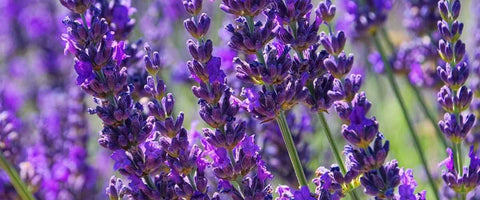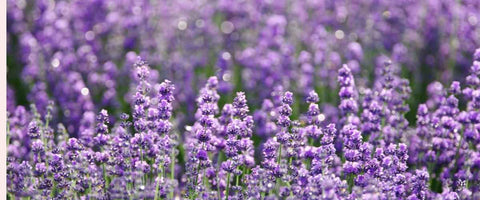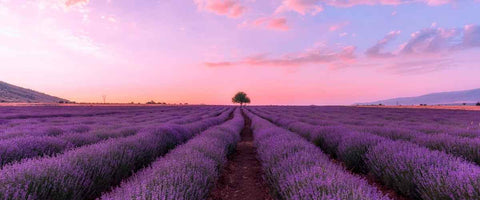Introduction to Lavender Flower
Flowers are gorgeous, right? Their growth and bloom amaze gardeners and flower lovers alike. A popular flowering plant, lavender grows in many gardens. Its pleasant scent helps ease stress and encourage sleep. We often wonder about their significance.
They represent and communicate what? Lavender is a word that soothes, inspires, and calms. Few colours better portray slow-moving energy. Purple goes beyond royalty. Lavender is more than a lovely, colourful plant with a grateful blossom. Religious and spiritual significance lies in lavender's persistent purple colour.
Moreover, if you're looking for air-purifying plants, low-maintenance plants, or pet-friendly companions, lavender flowers and many Greenkin houseplants are a versatile addition to any indoor or outdoor green bliss.
Let's learn more about indoor lavender flower plants, the best long-lasting flower plants for indoor or outdoor gardens. Explore the lavender flower’s characteristics, symbolic significance, care guide, and many benefits beyond its fragrance.
Characteristics of Lavender Flower
|
Characteristic |
Specification of Lavender Flower |
|
Botanical Name |
Lavandula (genus), with multiple species, such as Lavandula angustifolia (English Lavender) |
|
Common Name |
Lavender |
|
Family |
Lamiaceae (Mint family) |
|
Origin |
The Mediterranean region extends to parts of Africa and East Asia |
|
Appearance |
Delicate purple, blue, violet, pink, or white blossoms. Flowers grow in spikes over slender grey-green leaves. |
|
Growth Habit |
Compact, bushy perennial shrub |
|
Symbolism (Feng Shui) |
Purity, dedication, peace, grace, silence, and calm |
Meaning and Symbolism of the Lavender Flower
The lavender flower has several symbolic meanings. Learn about the meaning of the lavender flower, which emphasises purity, devotion, harmony, and religious and spiritual significance.
1. Symbolism and significance of the lavender flower:

Lavender symbolises purity, dedication, peace, grace, silence, and calm. Calming helps us relax and connect with ourselves. This is ancient. Unsurprisingly, a variety of herbal stress and relaxation remedies use lavender.
Purple symbolises power and elegance. This colour is connected with spirituality in many cultures. In countries where lavender is expensive, the upper class has used purple to decorate their homes and themselves to show off their wealth.
Home lavender symbolises serenity, tranquillity, nobility, and superiority. The appearance of this plant symbolises domestic pleasure. Lavender and its smell will bless a tranquil, happy home.
On a darker note, lavender symbolism caution. We should be careful when dealing with heart concerns because misinterpretation can cause grief and shatter all our hopes. Lavender reminds us to stay grounded in our actions and choices. We must maintain serenity and beauty in our lives and follow our passions.
2. Religious and spiritual significance of lavender flowers:

The Bible mentions lavender and its spiritual significance. This unique fragrance was used as incense or smoked as a herbal medication in Solomon's time and was found to be healing. Blessing, or healing, was its divine essence. Its unique fragrance was employed as incense for other gods, either to please the Lord or as a mild sedative or painkiller.
Additionally, the ancient Greeks associated lavender with intangible and cosmic elements. The Greeks burned lavender in temples and sanctuaries to honour the gods and goddesses.
How about the realm of the spirit? Yoga and meditation use lavender as a symbol. In some chakra systems, it is in the crown chakra, the energy centre of a person. The highest chakra energises your cosmic connection and mission.
Benefits of Having Lavender Flowers in the Home
Discover the various benefits of the lavender flower, including its fragrance rejuvenation and therapeutic properties, as well as its time-honoured benefits in vastu.
1. Health Benefits of Lavender Flowers:

Lavender's soothing and therapeutic smell has more than just sensory appeal. Inhaling the perfume of a lavender flower helps reduce stress and anxiety, making it an easy and natural method to relax.
Furthermore, lavender oil treats minor injuries and illnesses. It treats burns, wounds, rashes, and bug bites. Additionally, lavender oil can treat headaches, tension, and fatigue by being inhaled or added to massage oil or a moisturising lotion.
2. Vastu Benefits of Lavender Flower:

According to Feng Shui and Vastu Shastra, the lovely fragrance of lavender blossoms can help one relax, feel better physically, and experience healing vibrations. Lavender symbolises wealth and success because of its purple hue.
The lavender flower plant's fragrance promotes motivational tones, which aid in calming tense nerves. Lavender in the bedroom should be beneficial for individuals looking to improve their marital bliss. You should put the lavender plant in the north, east, or northeast for the best Vastu benefits.
Lavender Flower Care Tips
Learn how to provide the best care for Lavender Flower, from how much sunlight to the environments in which you intend to plant it, as well as the watering and pruning techniques.
- Lavender Flower Needs Sunlight: For lavender, sunlight is essential. Choose a sunny spot in your garden with 6–8 hours of direct sunlight every day when planting.
- Soil Requirements for Lavender Flower: Place lavender plants 18–24 inches apart for better airflow. Make sure the soil is well-drained and somewhat acidic (6.5–7.5 pH soil). Add sand or gravel to poor-draining soil. If the soil is too acidic, add limestone to improve the pH.
- Watering Guide for Lavender Flower: Lavender needs occasional watering and needs to dry completely in between waterings. Allow the top inch or two of soil to dry out between waterings. To avoid drain illnesses, water only the roots, not the foliage.
- Temperature Requirements of Lavender Flower: Lavender thrives in USDA zones 5–9. Not all lavender varieties are strong. You should check the variety's hardiness zone.
- Lavender Flowers Humidity Requirements: Lavender dislikes high humidity. Provide sufficient airspace for lavender flowers in the garden or home. In humid conditions, they can retain diseases like fungal infections.
- Fertilisation needs of Lavender Flower: Flowering lavender needs little fertilizer. A balanced, slow-release fertiliser in early spring usually works. Overfertilization can lead to lanky growth and fewer blooms.
- Pruning requirements of Lavender Flower: Proper lavender pruning is essential to its health and lifespan. Regular pruning improves flower quality and reduces woodiness.
Conclusion
The lavender flower is a popular indoor plant. Plus, it has many meanings. It can stand for purity, peace, quiet, or even vigilance. Beyond its pleasant fragrance, lavender offers numerous other vastu and health benefits, including stress reduction, its centuries-old healing properties, its use as a natural antiseptic solution, and its potential to promote prosperity. Lavender's demanding growing conditions include direct sunlight, occasional watering, light pruning, and basic care requirements for optimal growth.




















